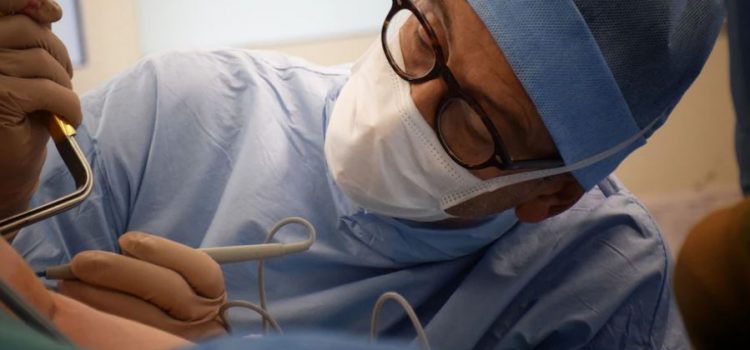
This is a free excerpt from one of Shortform’s Articles. We give you all the important information you need to know about current events and more.
Don't miss out on the whole story. Sign up for a free trial here .
What is gender-affirming surgery? What are the different types of surgery, and what are the potential side effects?
Gender-affirming care consists of three major components: psychological care, gender-affirming hormonal treatments, and gender-affirming surgeries. This article will go over the different types of surgeries, but keep in mind that surgery is only part of the picture.
Read below to learn all about gender-affirming surgeries including the different types, side effects, requirements, and the major barriers patients face.
Gender-Affirming Surgeries
What is gender affirmation surgery? Surgeries are the third main type of physical treatment in the category of “gender-affirming care.” These involve surgically changing the body (often primary or secondary sex characteristics). Compared to hormonal treatments, gender-affirmation surgeries are higher risk and much less reversible. Because of this, surgeries also have stricter requirements a patient (and a minor in particular) must meet to receive them. Like all gender-affirming treatments, patients may or may not choose to receive these surgeries.
There are three main categories of gender-affirmation surgeries:
Breast Removal and Augmentation
Breast removal and augmentation (also known as “top surgery”) involve surgically removing breast tissue or adding breast implants to create the appearance of a “male” or “female” chest (respectively) to ease gender dysphoria and better suit a patient’s gender identity. Side effects of these procedures can include scarring and loss of sensation, while complications can include damaged tissue, blood clots, and fluid buildup.
Patients often wait until adulthood before receiving these surgeries—for breast augmentation in particular, a certain period of hormonal breast development is recommended before any surgery. Depending on their country, however, minors often can receive these surgeries if they meet certain requirements (which we’ll discuss later on).
Genital Reconstruction
Genital reconstruction surgeries (also known as gender confirmation surgery, sex-reassignment surgery or “bottom surgery”) surgically reconstruct a patient’s genitals. The category includes different options for constructing a penis or vagina:
Penile Construction
Multiple different kinds of surgeries exist that can construct a penis. These surgeries typically occur after the removal of a patient’s uterus and vagina. The main two are phalloplasty and metoidioplasty:
Phalloplasty involves creating a penis from other tissues or skin grafts (often from the forearm or thigh), elongating the urethra through the constructed penis, and optionally adding erectile and testicular implants. A penis constructed through phalloplasty often has limited or no erotic sensation, depending on the techniques used.
Metoidioplasty involves constructing a penis and scrotum from tissues in the clitoris and labia, then optionally elongating the urethra through the constructed penis. Penises created by metoidioplasty typically have more erotic sensation than those created by phalloplasty but are also much smaller due to the smaller amount of tissue available.
Potential complications from penile construction surgeries include infection, hematoma, and rarely anal fistula.
Vaginal Construction
Gender-affirming vaginoplasties remove a patient’s testicles (if they haven’t removed them already through orchiectomy), create a cavity in the body, and (depending on the technique) repurpose other tissues to create a vagina, clitoris, and labia. There are three main techniques used for vaginoplasty:
Penile inversion vaginoplasty is the most common method. It essentially involves creating a vaginal cavity and lining it with skin repurposed from the patient’s penis, with the tip of their penis used to create a clitoris and skin from their scrotum used to create labia. The patient’s testicles and the inner tissues of their penis are removed. The constructed vagina has erotic sensation, both from stimulation of the prostate (which isn’t removed) and from the repurposed penile tissues. A vagina created from penile inversion doesn’t self-lubricate (or does so very little).
Intestinal vaginoplasty takes a small portion of skin from the colon to line the inside of the vagina, rather than repurposed skin from the penis. This procedure is often done to modify an existing neovagina created by another form of vaginoplasty. Otherwise, the procedure is similar to penile inversion. A vagina created from intestinal vaginoplasty typically has less erotic sensation than one created by penile inversion but is more self-lubricating.
Peritoneal vaginoplasty accesses the lining of the abdominal cavity through the surgically created cavity and “pulls it through” to line the inside of the vagina. This version of the procedure requires machine assistance since it requires precisely accessing the abdominal cavity through a very small incision. Otherwise, the procedure is similar to penile inversion. A vagina created from peritoneal vaginoplasty typically self-lubricates and has erotic sensation and also may be preferable for patients who didn’t go through testosterone-based puberty, since they’ll have a less developed penis (and therefore less tissue to use for reconstruction). However, it also has a greater risk of complications.
Complications for vaginoplasty include bleeding, infection, tissue death, and rarely fistulas. After surgery, a patient must indefinitely dilate their vagina to ensure it doesn’t close up or atrophy.
Other Surgeries
There are also a few other gender-affirming surgeries that don’t fall into the previous two categories. These include:
- Facial feminization surgery (often shortened to FFS) is a collection of procedures for transgender women or non-binary patients to reduce “masculine” facial characteristics. These surgeries do so by modifying facial bone structure or skin—moving it around or taking off some excess. Usually, facial feminization surgery modifies some combination of a patient’s brow, nose, forehead, and jawline.
- Voice feminization surgery is a surgical procedure that shortens a patient’s vocal cords, giving them a higher and more feminine-sounding voice.
Requirements for Gender-Affirming Surgery
The requirements for gender-affirming surgeries are much stricter than those for hormonal treatments. Requirements are stricter for genital reconstruction than they are for breast removal and augmentation. We’ll use requirements in the United States as an example, though the requirements in most countries are equally (or more) strict.
To receive surgery in the United States, a patient generally must obtain a letter (or two letters in the case of genital reconstruction) from a mental health professional that confirms the following:
- The patient either has been diagnosed with gender dysphoria or shows a clear pattern of gender-nonconformity.
- The mental health professional believes that the patient experiences mental discomfort due to the part of their body that they want to change and that surgery would help ease this discomfort.
- The patient understands the effects, risks, and impacts of this surgery (including what it might not help them with).
- The patient has transitioned socially for an extended period (usually at least a year)
- The patient has been on hormone replacement therapy for at least a year
- The patient will have a sufficient support system before and after their surgery, including family, friends, and mental health professionals.
- The patient’s other mental conditions and illnesses are treated and under control.
In addition, surgeons must confirm that the patient is physically viable for surgery—potential issues can include weight, age, family medical history, and regular use of tobacco, alcohol, or other drugs.
Note that many surgeons will not perform gender-affirming surgeries on minors (genital reconstruction surgeries in particular). In its standards of care, the World Professional Association for Transgender Health suggests that minors can receive breast augmentation or reduction surgeries if they meet the necessary requirements (and also have parental consent) but should not receive genital reconstruction surgery due to additional risk of complications and the irreversibility of the procedure.
Barriers to Surgery
Besides the written requirements to receive surgery, there are other barriers that often prevent patients from receiving gender-affirming surgeries. In particular, they include the following:
1) Access and availability: Surgeons are relatively rare in most places, meaning most patients have to travel to reach them. Even if patients do travel, skilled surgeons are often booked out for a year or more due to few surgeons and high demand. These barriers can often prevent patients from ever finding a suitable surgeon.
2) Insurance and cost: Patients also face many challenges paying for surgery (or getting the cost covered by their insurance). Surgeries cost tens of thousands of dollars, meaning many patients can’t afford to pay for them by themselves. However, they still can have trouble getting insurance coverage, facing denials of coverage (in countries with private insurance companies like the United States) and long waiting lists (in countries with public insurance like the United Kingdom). There also might be costs that aren’t covered by insurance—patients often have to take weeks off from work to recover, and they might have to pay for additional hospital stays and services or preparations for surgery.

Want to fast-track your learning? With Shortform, you’ll gain insights you won't find anywhere else .
Here's what you’ll get when you sign up for Shortform :
- Complicated ideas explained in simple and concise ways
- Smart analysis that connects what you’re reading to other key concepts
- Writing with zero fluff because we know how important your time is






